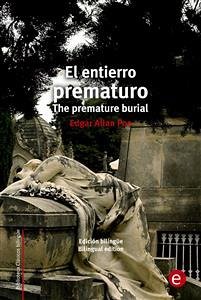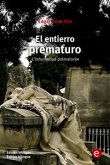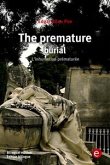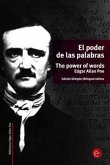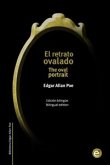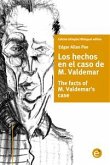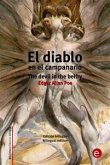El miedo al enterramiento en vida era muy común en la época, y Edgar Allan Poe obtuvo provecho literario de ello.En este relato, el narrador anónimo describe en primera persona un trastorno que le aqueja, caracterizado por «ataques de una afección singular que los médicos coinciden en denominar catalepsia». Esta enfermedad lo lleva con frecuencia a pérdidas de conciencia muy similares a la muerte, lo que conduce al personaje a un terror pánico a ser enterrado vivo en alguna de tales circunstancias: «La mayor de las desgracias posibles», afirma. A fin de que se comprenda esta fobia, el narrador enumera diversos casos probados de personas enterradas vivas. En el primer caso, la tragedia fue descubierta mucho más tarde, al ser reabierta la cripta.In "The Premature Burial", the first-person unnamed narrator describes his struggle with things such as "attacks of the singular disorder which physicians have agreed to term catalepsy," a condition where he randomly falls into a death-like trance. This leads to his fear of being buried alive ("The true wretchedness," he says, is "to be buried while alive."). He emphasizes his fear by mentioning several people who have been buried alive. In the first case, the tragic accident was only discovered much later, when the victim's crypt was reopened. In others, victims revived and were able to draw attention to themselves in time to be freed from their ghastly prisons.The narrator reviews these examples in order to provide context for his nearly crippling phobia of being buried alive. As he explains, his condition made him prone to slipping into a trance state of unconsciousness, a disease that grew progressively worse over time. He became obsessed with the idea that he would fall into such a state while away from home, and that his state would be mistaken for death. He extracts promises from his friends that they will not bury him prematurely, refuses to leave his home, and builds an elaborate tomb with equipment allowing him to signal for help in case he should awaken after "death".
Bitte wählen Sie Ihr Anliegen aus.
Rechnungen
Retourenschein anfordern
Bestellstatus
Storno

